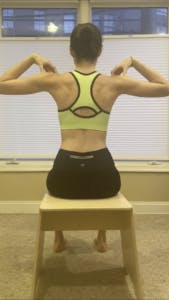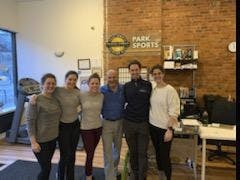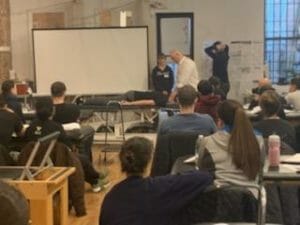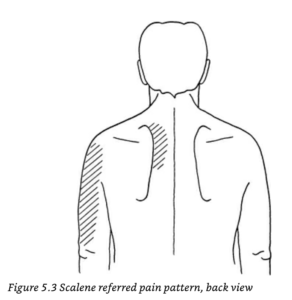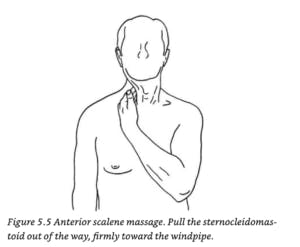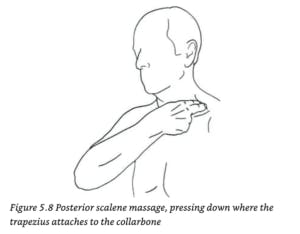In this post I will discuss Overpronation and Orthotic for runners.
During my 30 years of practice as a sports physical therapist, I encountered many runners with afflictions that they attributed to overpronation or flat feet: plantar fasciitis, shin splints, tendinitis, and knee pain, to name a few. A question that is commonly asked: are orthotics good for plantar fasciitis, shin splints? What if you are a runner and developed those symptoms due to your activity? I do not have a straight answer to that. The foot is the final link of a lower extremity kinetic chain. Treating solely pronation without assessing the knee, the hip, and the spine, may not necessarily solve the underlying problem. Clinicians occasionally make a pre-judgment error in mistakenly recognizing something they already know and are familiar with as the main cause for a symptom. Overpronation is a well-known abnormality not only to physical therapists and other clinicians but to trainers, running coaches, and running shoe salespeople in a local sporting good store. Running analysis set up in the shoe store often lacks scientific standards. Well-intended advice for a particular running shoe or orthotic may not lead to the desired benefit.
What running experts say about orthotics.
Said Aouita, a famous Moroccan-born runner, who won the 50000-meter race in the 1984 Summer Olympics and set many world records in shorter distances admitted to the French newspaper L’Equipe that fallen arches have been an issue during his entire career. “My only problem is that I have flat feet, which promotes tendinitis”. Aouita had specially created custom shoes that provided the additional support he needed. Supplementing fallen arches with orthotics insoles can better support adjoining ligaments and tendons, one piece of advice Aouita gives to the runners.
Ethiopian athlete Haile Gebreselassie is considered one of the greatest long-distance runner of all times. He set 27 world records, winning two Olympic Gold medals and the Berlin Marathon 4 times in a row. Running experts had been studying his overpronation and were baffled by it. They recognized his overpronation as a postural deformity. He found a different solution to the same problem that Aouuita experienced: barefoot running.
What is pronation?
Pronation is a shock-absorbing adaptation. Lowering your arch to the ground by inward rolling of your foot. It allows for the distribution of an impact across your foot and stores the elastic energy released during the push-off.
In overpronation, the foot arch drops downward and the ankle rolls inward too much. It continues to roll when the toes should be starting to push off. As a result, you cannot effectively push off.
Do I under or overpronate?
Overpronation and flat feet are often used synonymously, but they are not the same thing. In fact, you can be overpronating, but not have flat feet.
Underpronation is when there is too little inward and downward movement of the foot. Overpronation is more common in runners. Both conditions distribute impact unevenly and may lead to shin splints, stress fractures, plantar fasciitis, Metatarsalgia, and Achilles tendinitis.
How do I stop overpronation when running?
Do you really need to? Overpronation as a cause for foot pain cannot be considered in isolation. Without assessing the running style, joint flexibility, and bone structure of the entire lower extremity, we cannot determine that overpronation is the sole reason for pain. A thoughtful physical therapist should not start fixing pronation. Each runner develops their unique running style. Changing it may take away a useful adaptation. It may force the runner in an unnatural movement pattern. It will lead to higher energy expenditure and undue stress in other parts of the body. Further in this article, I will discuss a recently developed ” habitual motion path theory” that supports an argument against treating overpronation by orthotics for runners.
What are the foot orthotics and do they really help?
Although we focus on orthotics’ usefulness in runners, they are used widely for static corrections. The vast majority of the custom made orthotics are prescribed by the clinician to correct the foot deformity.
An orthotic is a shoe insert that supports the abnormal movement of the foot. It claims to properly align your feet and avoid imbalances by adjusting the angles at which your foot strikes the ground. According to the recently published issue of the American Foot and Ankle Society’s journal https://www.aofas.org/, there was no significant change in incidences of foot problems between the users of custom orthotics and those who wore over-the-counter ones.
Are foot orthotics prescribed too often?
Over the counter, orthotic insole value in North America is $1.2 billion. The price of the shell orthotics is $10-120. This number does not include custom-made or prescription orthotics that can range from $300 to-500. A clinician makes a cast of your foot and sends it to the lab, where the insole is created. Some insurances cover the cost.
Running is a high impact sport. There is repetitive stress on biological tissues that are often associated with cumulative trauma. Foot and ankle is just a part of a mechanical chain. It follows the path set up by the joints above it. The Habitual Motion Path Theory states that humans instinctively “choose” an optimal path of lower extremity joint movement. The neural control regulates our movement and directs our motion in the path of least resistance. How we walk and how we run is specific to each individual’s anatomy, soft tissue mechanical properties. In other words, our bodies will find a way to minimize the loading on our lower extremities joints during running.
What is a habitual motion path theory?
According to the habitual motion path theory, https://www.nature.com/articles/s41598-020-58352-5the runner must generate amplified lower extremity joint movement in order to optimize the load distribution to regions in your lower extremities. Any deviation from the Habitual Motion Path leads to loading to less adopted structures leading to a risk of injury. Neural control of running is adjusted to avoid irreversible injuries such as osteoarthritis. Such a theory is supported by scientific evidence. It was put to test in a recent study performed in Germany in the institute of Biomechanics and Orthopedics. The purpose of this study was to examine how deviation from a natural running path can negatively affect your knees. The subjects had to run for 75 minutes under 3 running conditions in their natural state and with inserts in their shoes either on the inside or outside of the border of the insole. Thus the subjects were forced to run in conditions that deviated from their natural path. Then the MRI of cartilage volume measured after the exercise demonstrated a statistically significant decrease in the knee cartilage volume in the runners who ran with inserts in their shoes.
Physical Therapy for the runner’s injury in Brooklyn
Although orthotics have their value for correcting foot deformity, I would use caution in prescribing one for the runner who was diagnosed with overpronation. If you were diagnosed with foot pain, plantar fasciitis, shin splint, or tendinitis the first step in your treatment at Park Sports https://parksportspt.com/staff/would be a thorough functional evaluation that may include a detailed running analysis https://parksportspt.com/running-analysis-how-you-run-and-walk-matter-a-lot/. Orthotic services are available at our Williamsburg location, and are offered only to those patients who are most likely would benefit from them. In conclusion: overpronation cannot be diagnosed by simple observation. Many other clinical factors must be taken into consideration. Please visit our services website for more information.
Boris Gilzon, PT, DPT, OCS, CHT
.png?auto=format&auto=compress&h=150)







